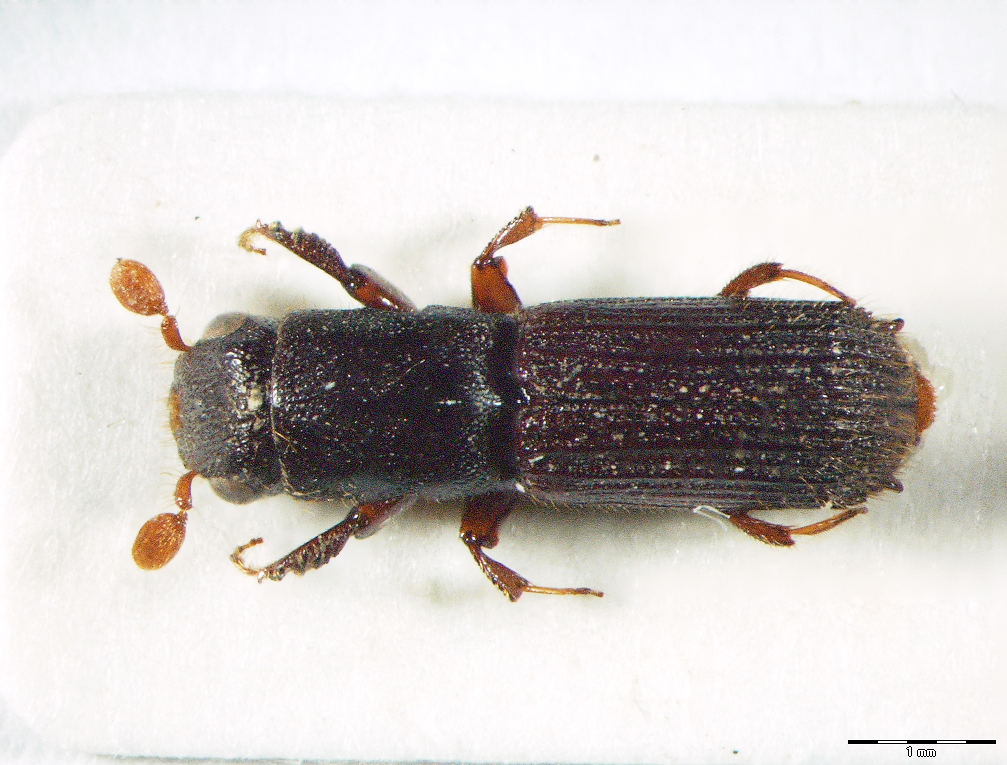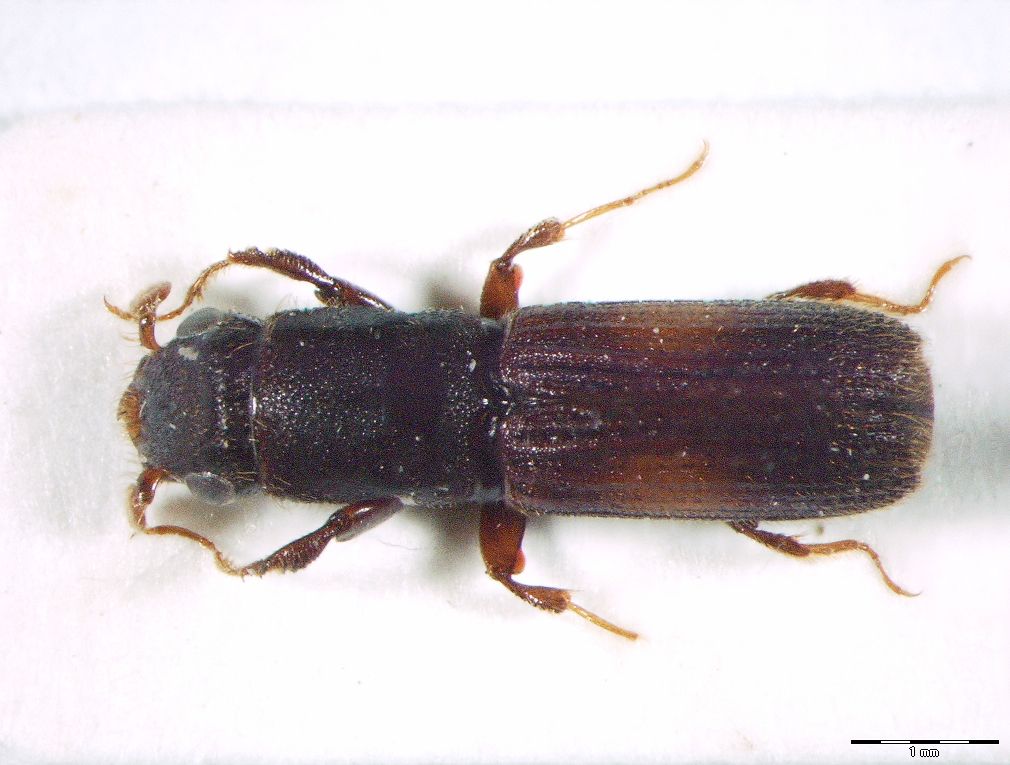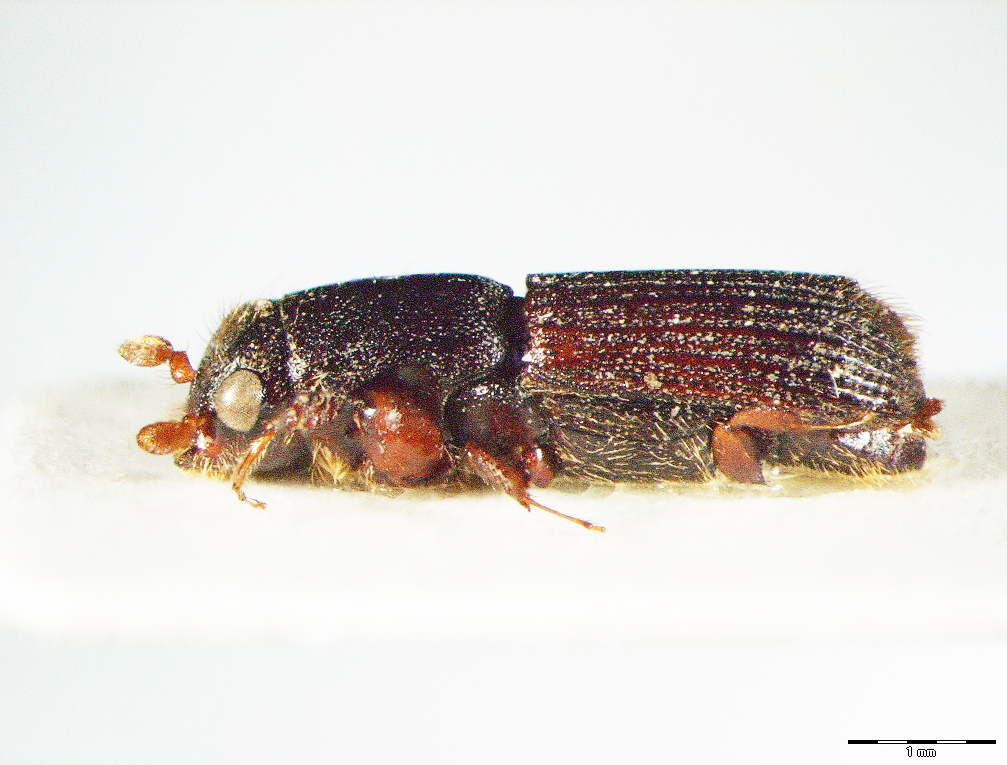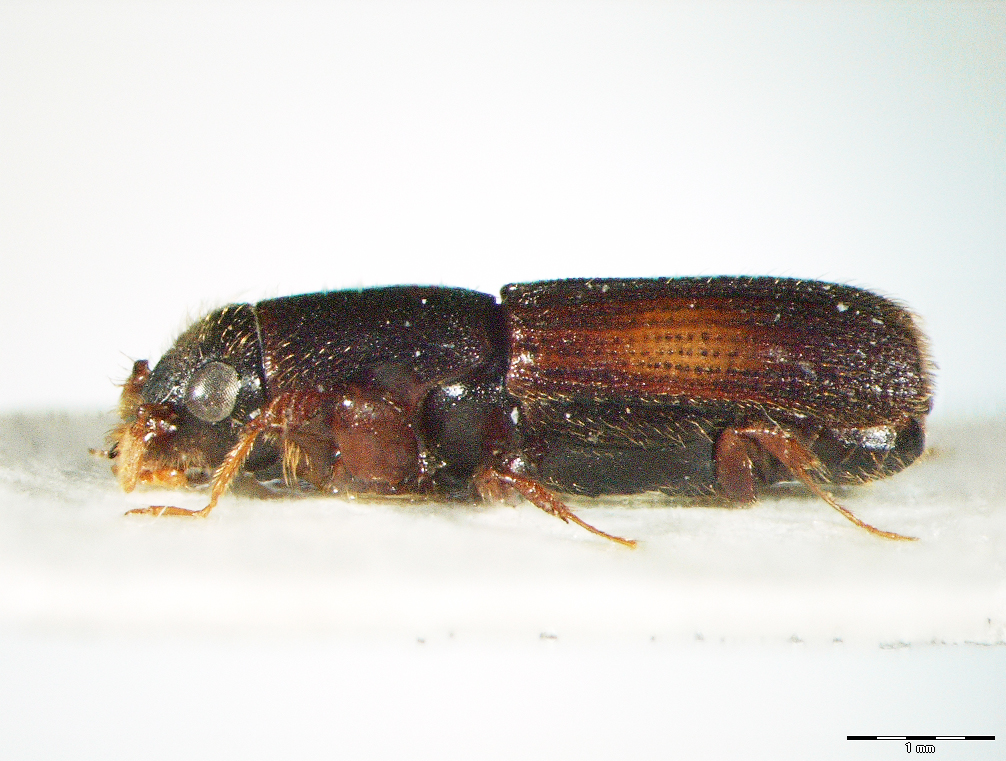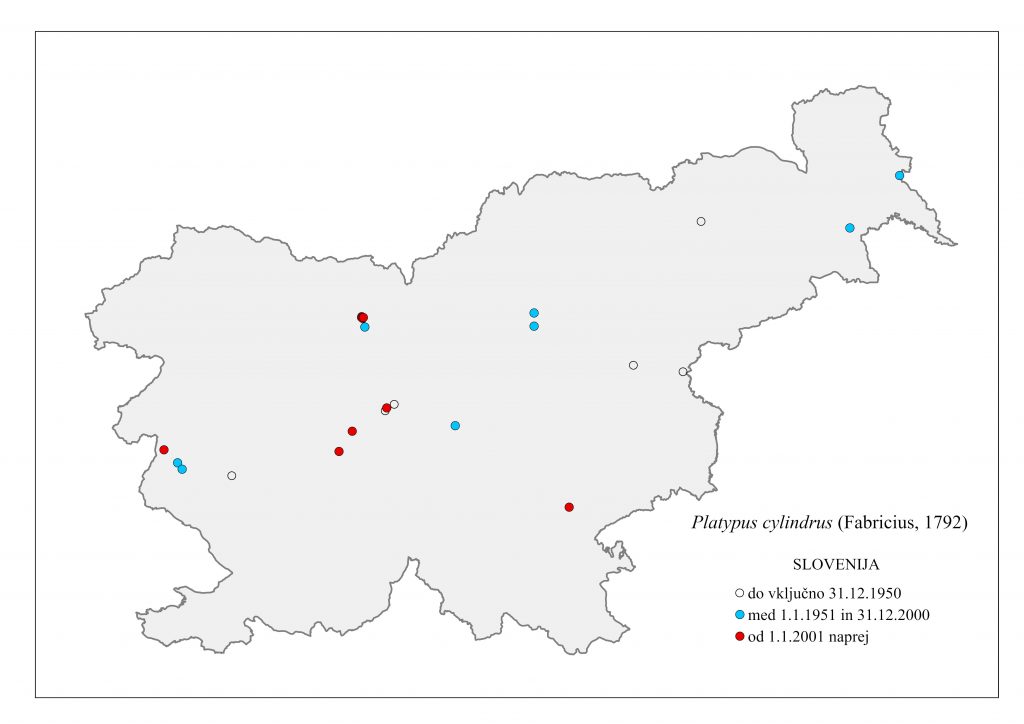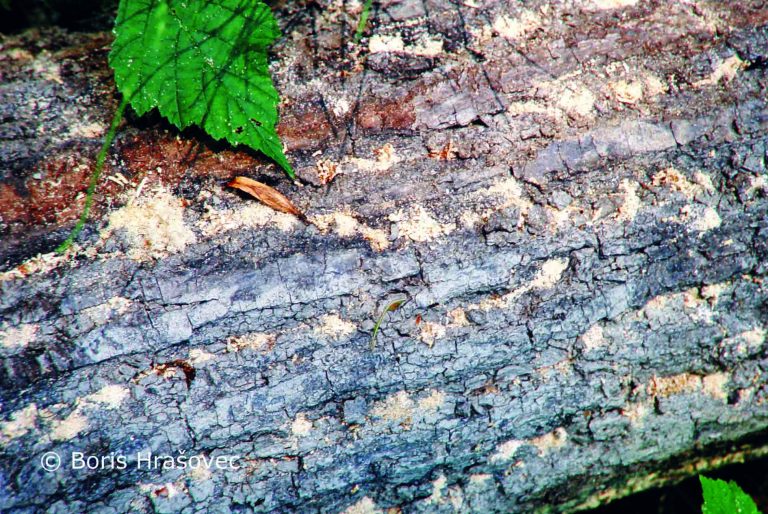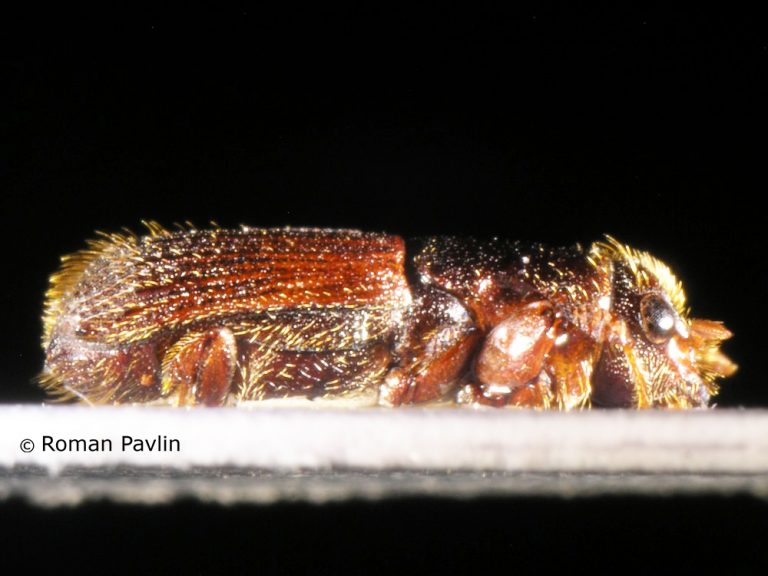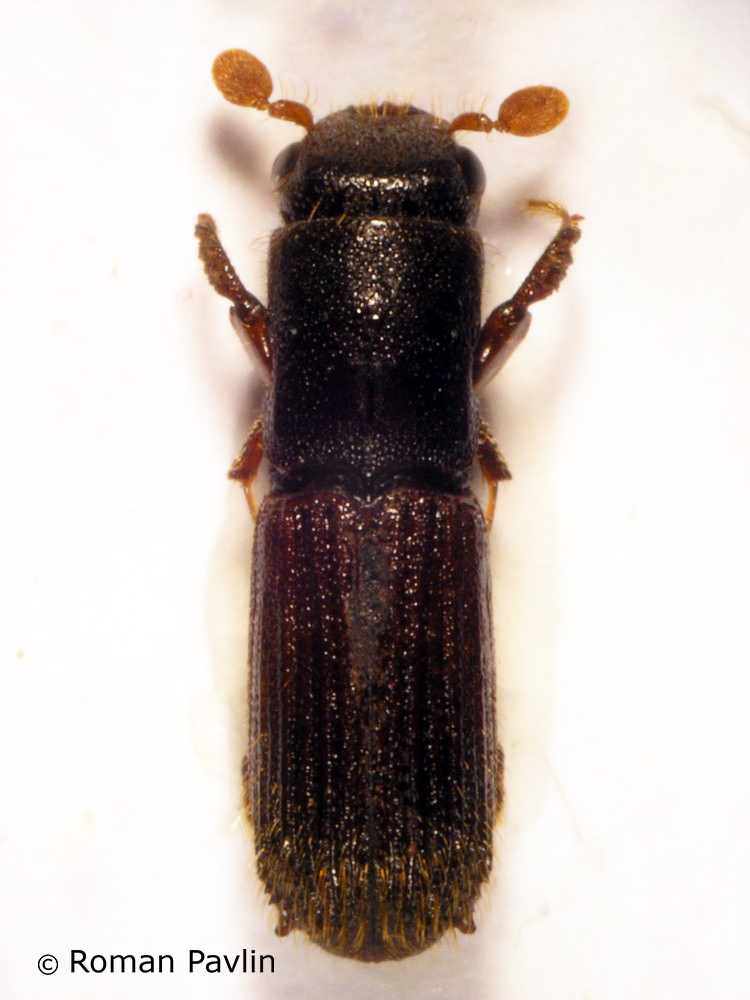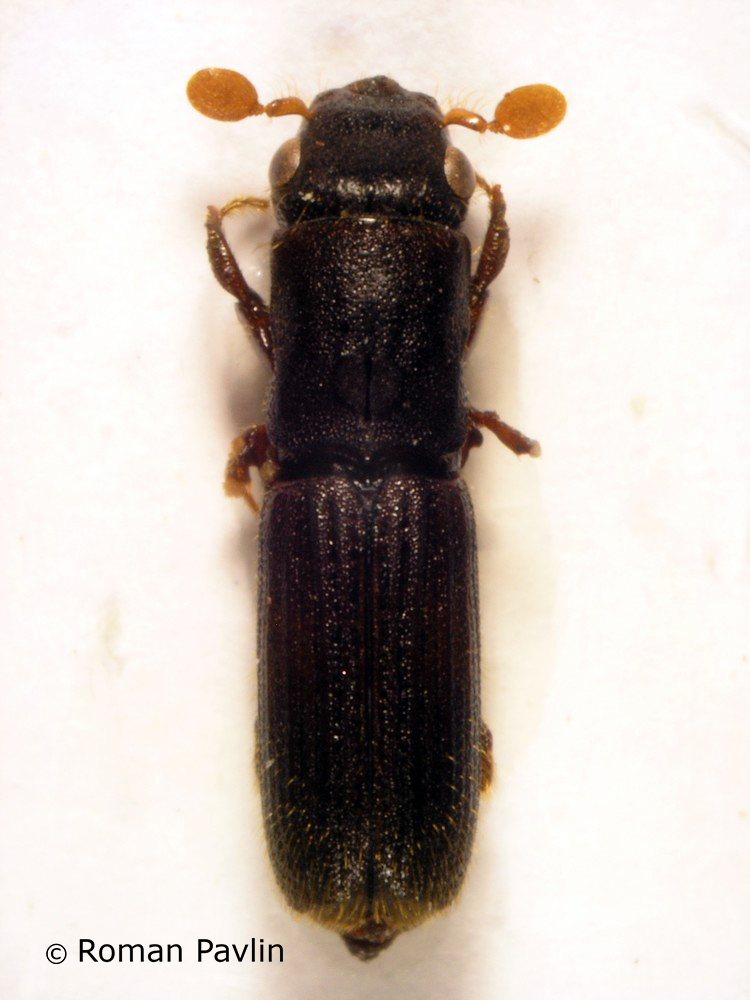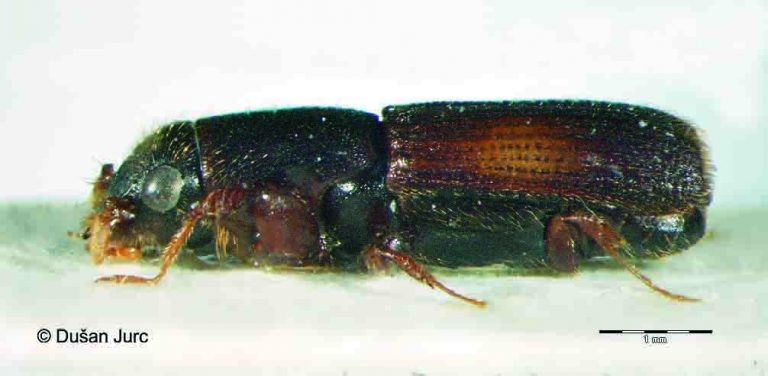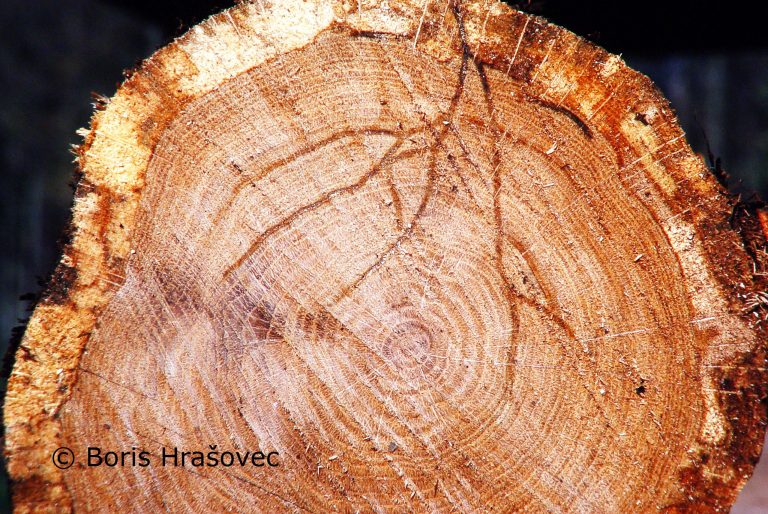01.01. Platypus cylindrus (Fabricius, 1792)
Presence
E: AU BE BU BY CR CZ DE FR GB GE GR HU IT LA MC NL NR PL PT RO SK SL SP ST »Caucasus« SV SZ UK YU
N: AG EG LB MO TU
A: IN TR
Figure 191: Platypus cylindrus (above: male – dorsal, lateral, below: female – dorsal, lateral) (Photo: Maja Jurc)
Older catalogs and keys – citations of name
Siegel 1866: Platybus cylindricus Fab.; Freude, Harde, Lohse 1981: Platypus cylindrus Fabricius; Pfeffer 1995: Platypus cylindrus (Fabricius, 1792).
Figure 192: Platypus cylindrus, distribution map according to historical and recent data
Ecology and presence in Slovenia
The species is distributed in Europe, North Africa (Algeria, Egypt, Libya, Morocco, Tunisia) and Asia (Iran, Turkey). Records exist almost from all Slovene regions (Figure 192). Hosts include Quercus robur, Q. petraea, Q. cerris and Quercus spp., less frequently Fagus sylvatica, Fagus spp., Pyrus communis, Sorbus aucuparia, Alnus glutinosa, Fraxinus excelsior, Castanea sativa, Prunus avium, Tilia spp., Ulmus spp. and Juglans spp.. In Slovenia, the species has been recorded on Quercus petraea, Q. robur, and once also on Q. cerris. P. cylindrus has an annual generation. It builds fork-shaped tunnel systems consisting of a radial entrance tunnel (up to 18 cm long) branching into lateral galleries up to 30 cm long and 1.8-2.2 mm in diameter. The entire tunnel system planar. The females introduce specific species of endosymbiont fungi into the tunnels, which live in symbiosis with the larvae. The larvae feed on decomposed wood. The imago is 5.0-5.5 mm long. The body is elongated, cylindrical, red-brown in colour. The head is broader than the neck shield, the eyes are accentuated, round. Sexual dimorphism: males have one large, fin-shaped denticle emerging from the interspaces on the left and right flanks at the end of the semicircular elytra apex. In females the two denticles are missing (Figure 191). The 6.0-7.0 mm long larva is distinguished from those of the other bark beetle larvae by the prominent segment of the pronotum. The species is distinctly tertiary, with imagoes burrowing into felled trees. They reduce the technical value of the wood by building tunnel systems.

